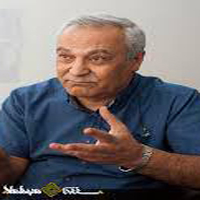Identifying the effective factors on the realization of the diversity-oriented urban planning model in Rasht using the method of systematic grounded theory
As an Iranian city, Rasht is made up of diverse people of different ages, sexes, physical abilities, and ethnic backgrounds. Many of the world’s urban planning mechanisms have shifted to adopt diversity-oriented approaches and incorporate diversity and difference into urban planning processes by embracing the diversity of urban residents. However, the urban planning mechanism in Iran and the city of Rasht still treats citizens as the same thanks to modernist thoughts, disregarding the differences in age, sex, ethnicity, religion, and physical ability and, consequently, the differences in the citizens’ needs in the city. Planning theory and practice has recently become more conscious of the need to cater to diverse needs and preferences. Planning for diversity and difference is a social interpretation of planning for cities and an approach that considers the needs of different groups of people. This study aimed to identify the factors affecting the realization of diversity-oriented urban planning in Rasht based on the viewpoints of planning experts in the city.
Diversity refers to the increasingly wide range of social and demographic backgrounds of people who live and work in the city. The notion of diversity is now used as a label for policies addressing the heterogeneity of local populations. Certain differences give rise to discrimination and disadvantage, while others do not. Gender, race, disability, and age are critical issues at the root of much discrimination in the society. The critical point is that differences between diverse social groups in enjoyment of the opportunities of urban planning measures are continually reproduced by a range of processes and policies, rendering a number of people mainstream and others marginal. Planning for diversity is a social interpretation of planning for cities, and is an approach that considers different groups of people. There are two conceptual frames, or ways of regarding this profoundly social interpretation of planning for cities, that need to be deployed simultaneously. Firstly, planning for diversity is planning for the diverse range of people who live in and use the city. Secondly, planning the institutional settings to encourage equality of access across places is planning to reduce difference.
One of the most efficient qualitative research methods, the grounded theory method was used to help achieve the research purpose; since the research problem is multifaceted, complex, and procedural, grounded theory can be an excellent way to provide an understanding of all the adequate conditions and factors. A semi-structured questionnaire was developed for data collection. Then, in-depth interviews were conducted with ten of the planning experts of this city. Sampling was carried out using a nonrandom sampling method called Snowball Purposive Sampling. In this research, a systematic approach known as grounded theory was applied. The systematic approach emphasizes the adoption of data analysis steps, including open coding, axial coding, selective coding, and the development of a logical model or a visual description of the generated theory. After the collection of textual interview data, analysis and coding began along with sampling. Specialized qualitative research software called Max QDA was used for that purpose. The main tasks of this software are to categorize data and connect the categories and to enable more sophisticated data analysis. In grounded theory, the researcher extracts subcategories, main categories, and core categories from the data, and continues the analysis.
Finally, the factors effective on the realization of the diversity-oriented urban planning approach were identified, including 17 main categories and 59 subcategories and the relationships between them. These factors include 1) reflection to govern the urban planning mechanism, 2) significant urban planning policies, 3) improvement of the approach applied to develop urban development plans, 4) modification of the contents of urban development plans, 5) public demand, 6) types of urban planning system, 7) national laws protecting the rights of various social groups, 8) law enforcement, 9) citizens’ cultural and social characteristics, 10) financial strength of municipalities, 11) organizational structure of the authority implementing the plans, 12) inter-organizational coordination, 13) education of urban planning students, 14) the knowledge and experience of the producers of urban development plans, 15) city council approvals, 16) needs assessment, 17) improvement of the quality of the urban environment/diversity-oriented urban environment. In the next step, we selected the category of applying and realizing the diversity-oriented approach from the open coding stage, placed it at the center of the process studied as the central phenomenon, and then related the other categories to it. These categories include causal conditions, strategies, contextual conditions, intervening conditions, and consequences. Next, a diagram called the coding pattern was drawn, which illustrates the relationships between causal conditions, strategies, contextual conditions, intervening conditions, and consequences. In the following step, we developed a theory of the relationships between categories in the axial coding pattern. This theory provides an abstract description of the process examined in this study, namely the application and realization of the diversity-oriented urban planning approach.
The results demonstrate that a wide range of intellectual, procedural, instrumental, organizational, legal, financial, educational, and socio-cultural infrastructures effectively realize this approach. Identification and explanation of these factors can guide the future decisions and practices of Iran’s urban planning authorities to help recognize diverse social groups, respond to their different needs in the city, and address discrimination in urban planning practices.
- حق عضویت دریافتی صرف حمایت از نشریات عضو و نگهداری، تکمیل و توسعه مگیران میشود.
- پرداخت حق اشتراک و دانلود مقالات اجازه بازنشر آن در سایر رسانههای چاپی و دیجیتال را به کاربر نمیدهد.


